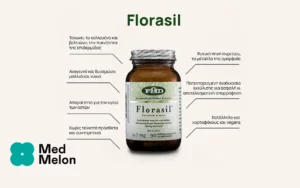Scientific Names of Dandelion Root:
Taraxacum officinale WEBER [Fam. Asteraceae]
Forms:
Dandelion root tea; dandelion root extracts
Traditional Usage:
– Antibacterial
– Anti-candidiasis
– Antifungal
– Anti-inflammatory
– Antioxidant
– Appetite Stimulant
– Bile Stimulant
– Biliary Deficiency
– Bloating
– Blood Sugar Control
– Bone and Joint Conditions
– Breastfeeding Problems
– Breathing Disorders
– Bronchitis
– Cellular Regeneration
– Cleansing
– Coffee Substitute (roasted root)
– Detoxifying
– Digestive Disorders
– Diuretic
– Dyspepsia
– Eczema
– Flatulence
– Gastrointestinal Disorders
– Hormone Imbalances
– Jaundice
– Liver Cleanse
– Mineral Absorption Enhancement
– Mineral Deficiency
– Pneumonia
– Prebiotic (enhances bifidobacteria)
– Respiratory Infections
– Skin Conditions
– Swelling
– Upper Respiratory Infections
– Urinary Tract Gravel
– Weight Loss
Overview:
Dandelion, Taraxacum officinale WEBER [Fam. Asteraceae], has been used traditionally as a medicine for many centuries in several different countries of the world including in Arabia, India, China, Europe and North America. Blumenthal and others note in the book, Herbal Medicine, that the genus name Taraxacum is derived from the Greek words meaning disorder (taraxos) and remedy (akos). First Nation peoples used dandelion root to treat urinary system disorders, skin problems and dropsy. Studies show beneficial effects of dandelion on reducing urinary tract gravel, attributed to disinfectant action and possibly the presence of saponins. The Ojibwa people of Wisconsin recommend the root tea for heartburn and Chinese herbalists recommend a strong root infusion for treating tonsillitis. Dandelion has also been used traditionally to treat respiratory disorders. Dr. James Duke notes in his book, The Green Pharmacy, that numerous clinical trials have demonstrated the efficacy of dandelion leaves and root for treating pneumonia, bronchitis and upper respiratory infections. The German Pharmacopoeia lists dandelion root for treating gastrointestinal complaints stemming from bile deficiency, as well as to stimulate appetite and diuresis. Administration of fresh dandelion root decoction to dogs by intravenous method doubled their volume of bile secretion. Other studies confirm the bile stimulating effects of dandelion root. Dandelion root was also used in folk medicine to ease joint and bone conditions and as a traditional blood purifier. Up to forty percent of the mature root is inulin, a mixture of complex carbohydrates known as fructo-oligo-saccharides (FOS). Based on clinical studies, intake of FOS significantly increases beneficial bifidobacteria within the gastrointestinal tract and eliminates pathogens. FOS also stimulates the immune system, increases mineral absorption and suppresses abnormal cell growth. The high levels of FOS in dandelion root and its water extract also help to keep blood sugar levels constant and reduce hyperglycemia.
Active Ingredients:
Dandelion root contains: Between 2-40% inulin (lower in the spring and up to 40% in the autumn) and up to 75% carbohydrates; bitter compounds of the sesquiterpene lactone type including eudesmanolides and germacranolides; triterpenes including beta-amyrin, taraxol, and taraxerol; approximately 9% fiber; up to 16.5% protein; up to 16% fatty acids including oleic and melissic acid; mannitol; minerals including up to 7.5% potassium, 6.1% calcium, 3.6% phosphorus, .4-2.5% magnesium and 1% iron; phenolic acids including caffeic and chlorogenic acids; sitosterol, stigmasterol and taraxasterol; sugars including approximately 6% glucose, 11% saccharose and 18% fructose in the spring; approximately 8.5% mucilage; and 7.8% pectins; tannins; and resins.
Suggested Amount:
Dandelion root is generally taken as an herbal tea three times per day. Use one to two teaspoonfuls of coarsely cut or powdered root per cup of tea (1 teaspoon of dandelion root weighs approximately 1.5 grams) for a daily dosage of between 5-15 grams. Other preparations may be taken correspondingly, such as fluidextract and tincture. Dandelion root fresh-pressed juice can also be taken with the recommended dosage of between 5-10ml daily. For treating pneumonia, bronchitis and upper respiratory tract infections, it is recommended that the tea be boiled for a short time and finally passed through a strainer and that the leaves be eaten as well. The boiling process serves to increase the bioavailability of some of the active ingredients. As a food, dandelion root can also be added to soups and broths. For tonsillitis, Chinese herbalists recommend placing one ounce of root into two or three cups of boiling water and simmering until half the liquid remains. The resulting concentrate is recommended for tonsillitis and sore throat.
Drug Interactions:
None known.
Contraindications:
Dandelion root is contraindicated in cases of bile duct blockage, gall bladder empyrema, ileus or bowel obstruction of any kind. In cases of gall stones, seek the advice of a qualified physician. Dandelion leaf latex may cause contact dermatitis in susceptible persons, though rarely observed.
Side Effects:
Gastric discomfort may arise due to hyperacidity.
References:
Blumenthal M, Goldberg A, Brinckmann J 2000. Herbal Medicine: Expanded Commission E Monographs. Copyright American Botanical Council. Publ. by Integrative Medicine Communications, 1029 Chestnut Street, Newton, MA 02464. Pp. 78-83.
Kashiwada Y, Takanaka K, Tsukada H, Miwa Y, Taga T, Tanaka S, Ikeshiro Y. 2001. Sesquiterpene glucosides from anti-leukotriene B4 release fraction of Taraxacum officinale. J Asian Nat Prod Res. 2001; 3(3): 191-7.
Rudenskaya GN, Bogacheva AM, Preusser A, Kuznetsova AV, Dunaevsky YaE, Golovkin BN, Stepanov VM. 1998. Taraxalisin — a serine proteinase from dandelion Taraxacum officinale Webb s.l. FEBS Lett. 1998 Oct 23; 437(3): 237-40.
Takasaki M, Konoshima T, Tokuda H, Masuda K, Arai Y, Shiojima K, Ageta H. 1999. Anti-carcinogenic activity of Taraxacum plant. I and II. Biol Pharm Bull. 1999 Jun; 22(6): 602-5; 22(6): 606-10.
Wichtl M (ed). 1994. Taraxaci Radix and Herba – Dandelion Root and Herb (English translation by Norman Grainger Bisset). In Herbal Drugs and Phyto-pharmaceuticals. CRC Press, Stuttgart, pp. 486-489.




